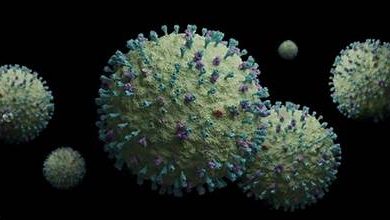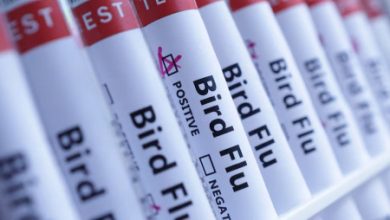
Introduction
Not only are honeybees renowned for their amazing capacity to create honey and pollinate plants, but they can also be trained to recognize signs of lung cancer. Because of their extraordinary ability, honeybees are now recognized as bio-detectives, providing a special and organic way to identify cancer early on. Let’s explore the ways in which these little insects are revolutionizing medicine.
The Fascinating World of Honeybees
Honeybees can discover flowers and communicate with their hive because to their remarkable sense of smell. Their keen sense of smell is what qualifies them as possible candidates for lung cancer detection. Honeybees can be educated to link particular scents with rewards through a process known as olfactory training, which allows them to recognize the scent of malignant cells.
Lung Cancer: A Global Health Challenge
One of the main causes of cancer-related mortality across the globe is lung cancer. With more than 2 million new cases diagnosed each year, increasing survival rates requires early identification. Conventional diagnostic techniques, such biopsies and imaging, might occasionally be insufficient for early-stage detection and can be costly and invasive. Here’s where honeybees come in handy, providing a cheap and non-intrusive substitute.
Honeybees as Bio-Detectives
In what way, then, do honeybees identify lung cancer? VOCs, or volatile organic compounds, are released when someone exhales and may be a sign of cancer. By training them to identify these volatile organic compounds (VOCs), honeybees can detect lung cancer in breath samples. The potential of honeybees in this field has been shown by a number of investigations and tests, which have produced encouraging results in the highly accurate detection of cancer.
The Science Behind Honeybees’ Detection Abilities
Due to their approximately 170 odorant receptors, honeybees are able to sense a large variety of scents. After training, they are able to distinguish between malignant and healthy cells by their distinct volatile organic compounds (VOCs). This sensory ability is on par with, and occasionally even superior to, more conventional diagnostic instruments such as gas chromatography and electronic noses.
Training Honeybees for Medical Detection
The technique of teaching honeybees to identify lung cancer is methodical. Scientists combine the smell of cancer cells with sugar water to attract bees. Bees are effectively conditioned to detect the cancer scent when they gradually begin to link it with favorable outcomes. Training takes only a few hours to several days, and success rates of up to 98% have been reported.
Advantages of Using Honeybees for Lung Cancer Detection
Using honeybees as bio-detectors has a number of benefits. First of all, it’s affordable. Compared to advanced medical equipment, honeybee training and maintenance require very little resources. Second, honeybees can be trained and used quite quickly, producing quick results that can help with early diagnosis and treatment.
Challenges and Limitations
But there are restrictions and difficulties to take into account. It is necessary to discuss the viability of employing honeybees in healthcare settings. It’s critical to protect the bees’ health and preserve their training regimen. Furthermore, although having a high accuracy rate, honeybees are not perfect and should be used in conjunction with other diagnostic techniques.
Comparing Honeybees to Other Bio-Detection Methods
Dogs have also been trained to detect cancer through scent, and they too show remarkable accuracy. However, honeybees offer a quicker and more scalable solution. Other animals, like rats, and technologies such as electronic noses, are also being explored, but each method comes with its own set of pros and cons.
Ethical Considerations
Using honeybees for medical detection raises ethical questions regarding their treatment and welfare. It’s important that honeybees are treated humanely and their use is regulated to prevent any harm. Public perception and acceptance are also vital; people need to be informed about the benefits and limitations of this method to foster trust and support.
Future Prospects
The future of honeybees in lung cancer detection looks promising. With ongoing research and development, there is potential for widespread adoption of this method. Future studies may focus on refining training techniques, improving accuracy, and exploring the detection of other diseases.
Case Studies and Real-World Applications
There have been several successful case studies where honeybees detected lung cancer in clinical settings. For instance, in a trial conducted in the Netherlands, honeybees were able to identify lung cancer with an accuracy rate of 95%. These real-world applications showcase the practical potential of honeybees in medical diagnostics.
The Role of Technology in Enhancing Bio-Detection
Integrating technology with bio-detection can further enhance accuracy and efficiency. Innovations such as automated training systems and AI algorithms can help streamline the process, making it easier to deploy honeybees for large-scale cancer screening programs.
Public Awareness and Education
Educating the public about the potential of honeybees in medical detection is essential. Increased awareness can lead to greater acceptance and support for research in this field. Promoting early detection of lung cancer through various methods, including bio-detection, can save lives and reduce the burden on healthcare systems.
Conclusion
Honeybees, with their remarkable olfactory abilities, are emerging as unexpected heroes in the fight against lung cancer. Their role as bio-detectives offers a promising, non-invasive, and cost-effective method for early cancer detection. While there are challenges to overcome, the future looks bright for this innovative approach. As research progresses, honeybees may soon become an integral part of our diagnostic toolkit, helping to save countless lives.



